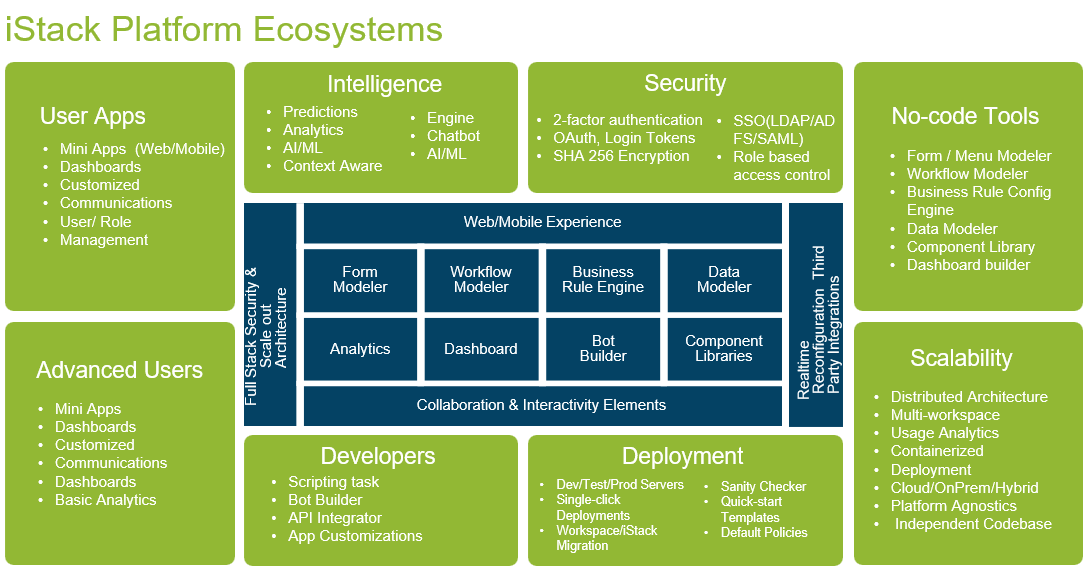Architecture is everything
Systems must be architected right from the beginning. A strong architecture leads to a strong foundation and should be applied consistently throughout the entire system. A strong architecture leads to all kinds of benefits: big systems can be built far faster with far less effort; systems can be much more flexible in meeting the evolving needs of the business; systems can be much more efficient and scalable, thereby lowering operating costs; and systems can be dramatically more resilient, which is important for mission critical systems.

Graphical Development
IntelliFlow provides end-to-end graphical development of complex applications. This means that whole applications are typically built completely graphically with IntelliFlow Designer using its Form Builder, Workflow Designer, Rule Engine and Data Modeler. Graphical development is inherently more productive and less costly than traditional coding.

Metadata-Driven Engine
IntelliFlow’s metadata-driven engine is a key part of the architecture that delivers agility and productivity. It allows graphical applications to be built once and then applied many times, without change, to different data, rules, and processing environments.
Applications change over time for many reasons: data formats, business rules, table and schema definitions, hardware servers, number of processors, data sources and targets, batch versus real-time, and so on. With traditional approaches such as open source, most or all these things end up being hardwired into the application.

If something changes, the application needs maintenance. Or, if approximately the same application flow needs to be applied to tens, or hundreds, or even thousands of specific similar but different instances, then tens or hundreds or thousands of copies of the same application need to be created, customized, and tested. This is very expensive and time consuming.
IntelliFlow’s metadata-driven architecture means that a single application can automatically adjust to many of these changes — without involvement by developers or business users. The information about the variations comes in metadata specifications, which then drives the system to do what is needed, hence metadata-driven.
Performance and Flexibility
With most software, performance is the enemy of flexibility and vice versa. Not so with IntelliFlow because it was architected from the beginning with both performance and flexibility in mind.
The core of IntelliFlow is implemented using modern technology stack and has been carefully crafted by experts to make the best possible use of hardware and operating system resources.

Flexibility is designed into IntelliFlow from the beginning because the entire system is metadata-driven and uses just-in-time compilation. Here, flexibility means that an application can be reused many times because all the details can be specified through metadata-driven specifications. So instead of building large collections of similar but different applications to address changing data sources and targets and formats, changing business rules, changing platforms, changing error handling and reporting, and so on, a single application is implemented and is fed all the variations through a potentially large set of metadata specifications at runtime. This means the metadata can change and evolve as quickly as the business people need without changing or affecting the applications themselves.
